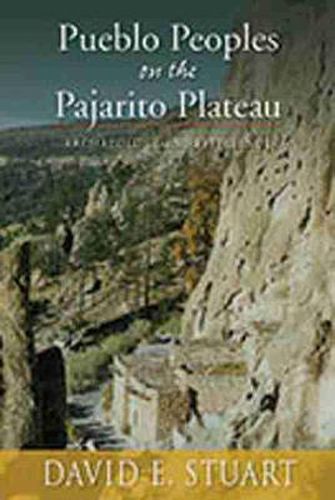Readings Newsletter
Become a Readings Member to make your shopping experience even easier.
Sign in or sign up for free!
You’re not far away from qualifying for FREE standard shipping within Australia
You’ve qualified for FREE standard shipping within Australia
The cart is loading…






This lively overview of the archaeology of northern New Mexico’s Pajarito Plateau argues that Bandelier National Monument and the Pajarito Plateau became the Southwest’s most densely populated and important upland ecological preserve when the great regional society centered on Chaco Canyon collapsed in the twelfth century. Some of Chaco’s survivors moved southeast to the then thinly populated Pajarito Plateau, where they were able to survive by fundamentally refashioning their society. David E. Stuart, an anthropologist/archaeologist known for his stimulating overviews of prehistoric settlement and subsistence data, argues here that this re-creation of ancestral Puebloan society required a fundamental rebalancing of the Chacoan model. Where Chaco was based on growth, grandeur, and stratification, the socioeconomic structure of Bandelier was characterized by efficiency, moderation, and practicality. Although Stuart’s focus is on the archaeology of Bandelier and the surrounding area, his attention to events that predate those sites by several centuries and at substantial distances from the modern monument is instructive. Beginning with Paleo-Indian hunter-gatherers and ending with the large villages and great craftsmen of the mid-sixteenth century, Stuart presents Bandelier as a society that, in crisis, relearned from its pre-Chacoan predecessors how to survive through creative efficiencies. Illustrated with previously unpublished maps supported by the most recent survey data, this book is indispensable for anyone interested in southwestern archaeology.
$9.00 standard shipping within Australia
FREE standard shipping within Australia for orders over $100.00
Express & International shipping calculated at checkout
This lively overview of the archaeology of northern New Mexico’s Pajarito Plateau argues that Bandelier National Monument and the Pajarito Plateau became the Southwest’s most densely populated and important upland ecological preserve when the great regional society centered on Chaco Canyon collapsed in the twelfth century. Some of Chaco’s survivors moved southeast to the then thinly populated Pajarito Plateau, where they were able to survive by fundamentally refashioning their society. David E. Stuart, an anthropologist/archaeologist known for his stimulating overviews of prehistoric settlement and subsistence data, argues here that this re-creation of ancestral Puebloan society required a fundamental rebalancing of the Chacoan model. Where Chaco was based on growth, grandeur, and stratification, the socioeconomic structure of Bandelier was characterized by efficiency, moderation, and practicality. Although Stuart’s focus is on the archaeology of Bandelier and the surrounding area, his attention to events that predate those sites by several centuries and at substantial distances from the modern monument is instructive. Beginning with Paleo-Indian hunter-gatherers and ending with the large villages and great craftsmen of the mid-sixteenth century, Stuart presents Bandelier as a society that, in crisis, relearned from its pre-Chacoan predecessors how to survive through creative efficiencies. Illustrated with previously unpublished maps supported by the most recent survey data, this book is indispensable for anyone interested in southwestern archaeology.